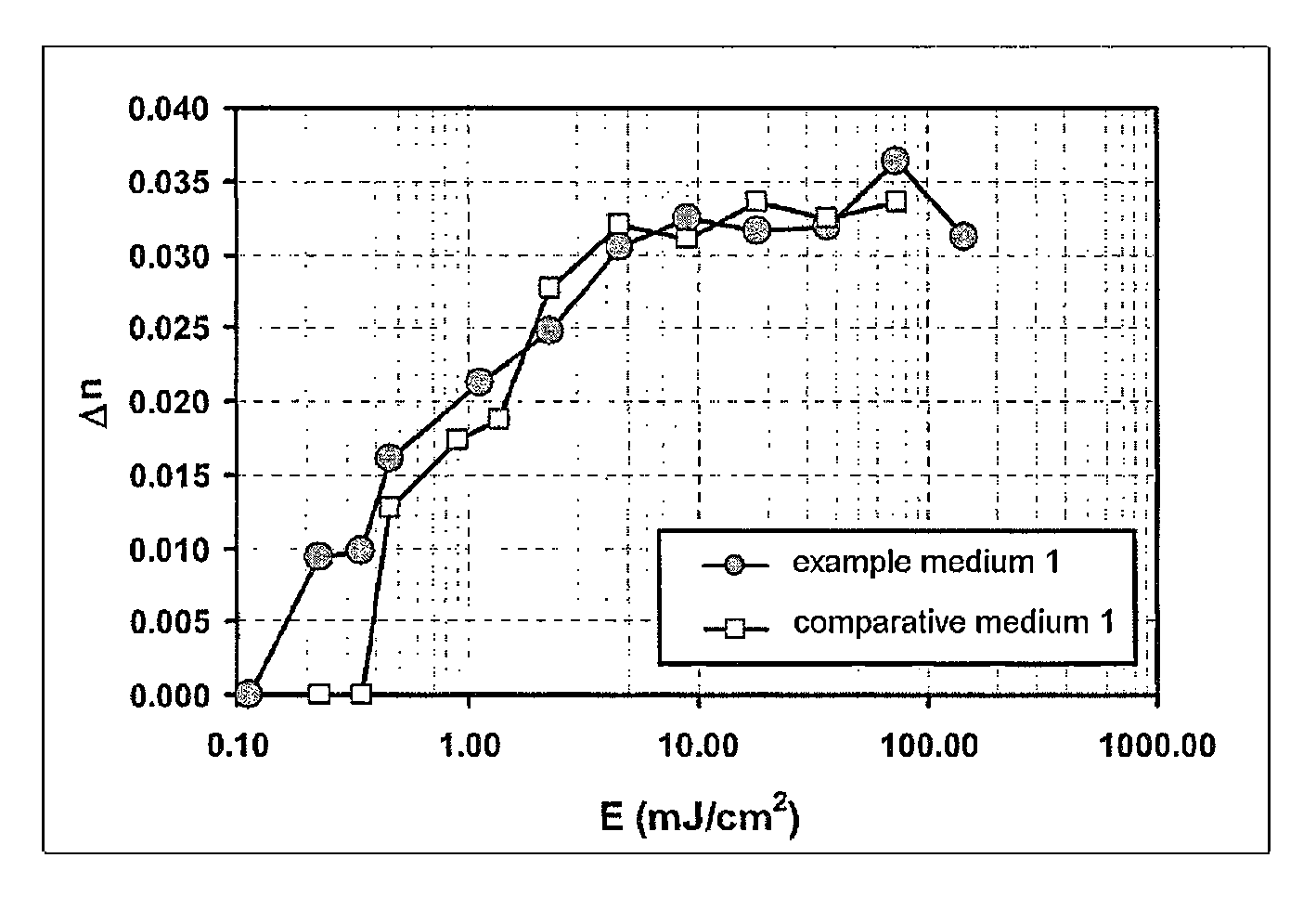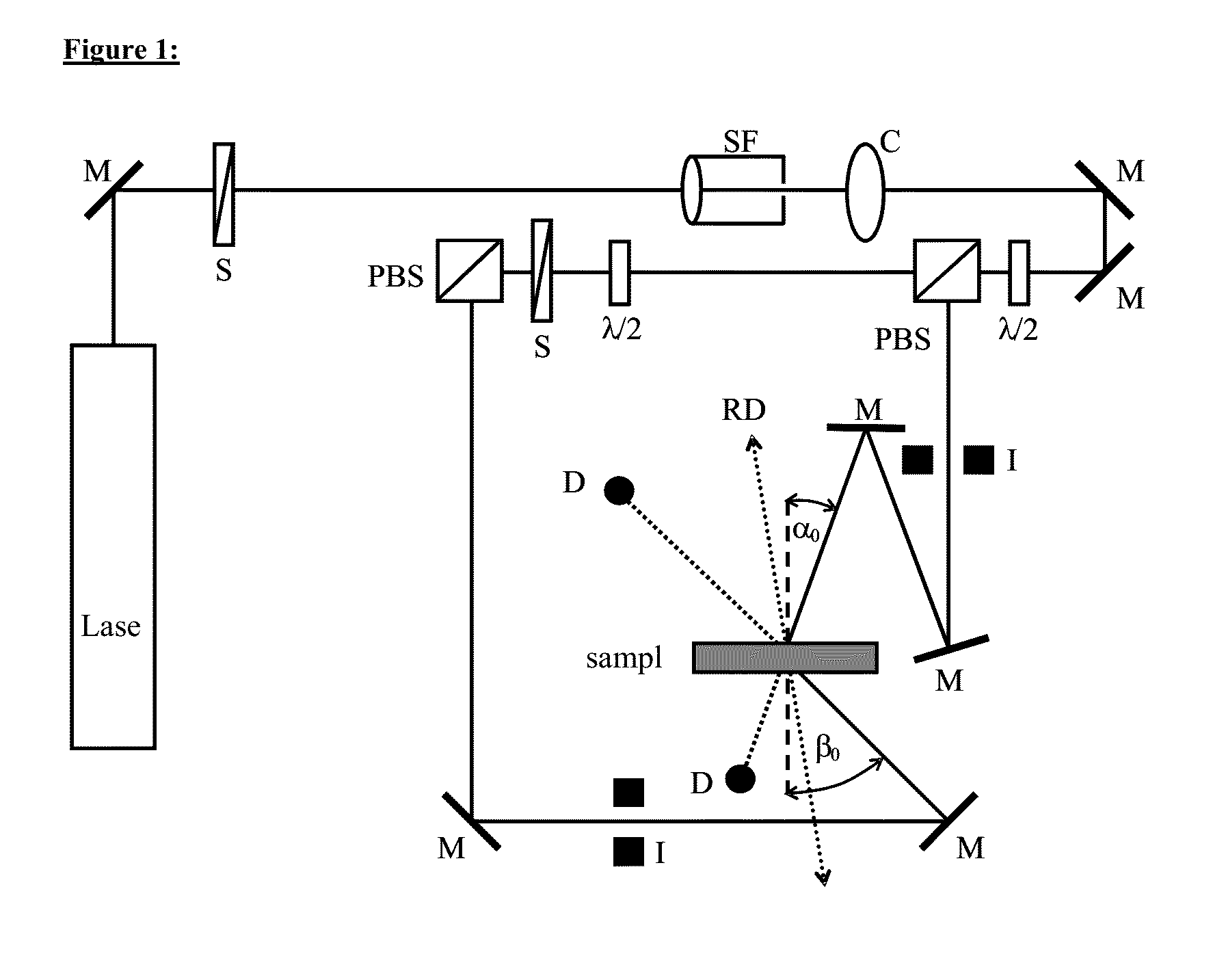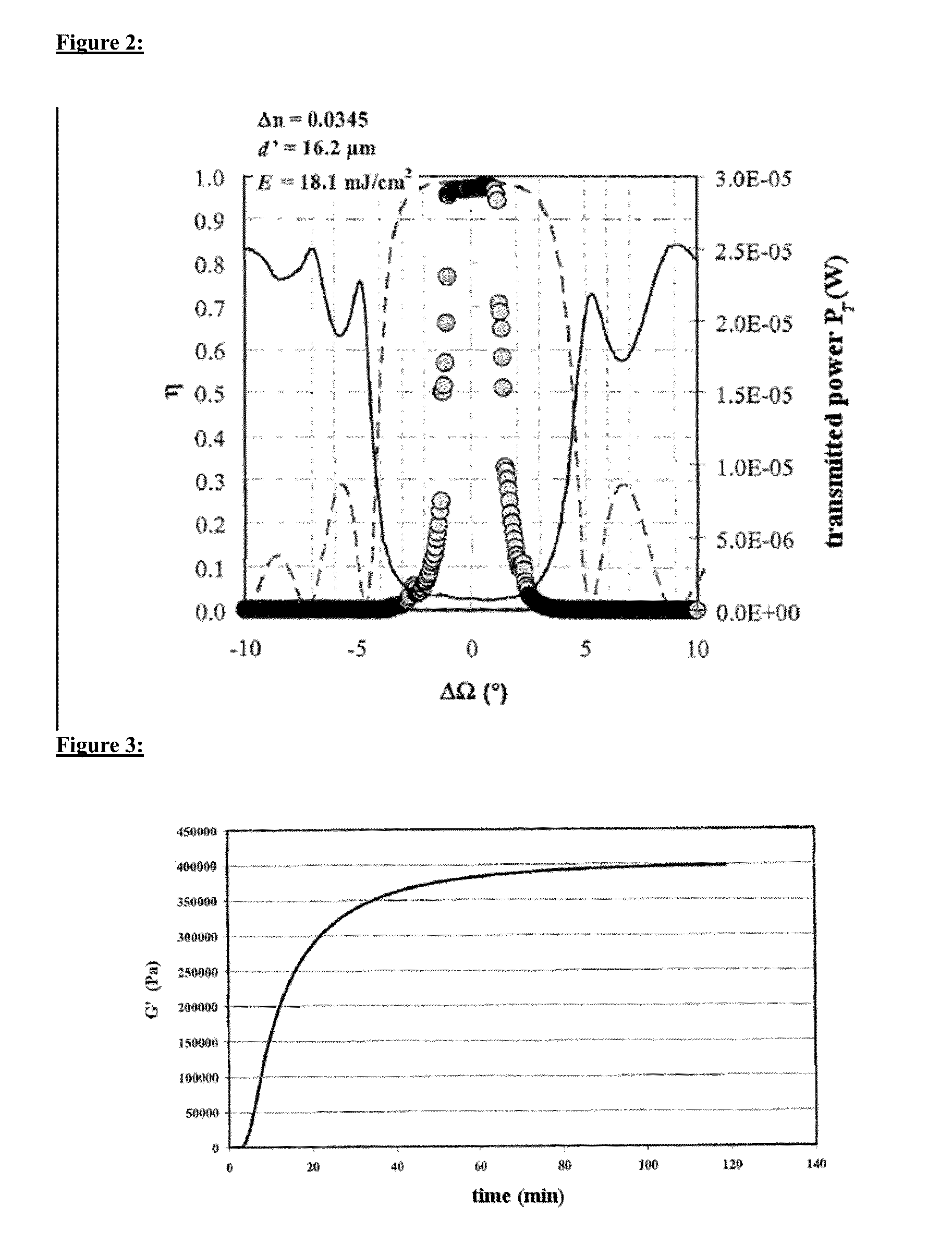Photopolymer formulation for producing holographic media having highly crosslinked matrix polymers
a matrix polymer and photopolymer technology, applied in the field of photopolymer formulation, can solve the problems of reducing the quality of holograms inscribed in the media, reducing the and subsequently even destroying holograms, and achieves the effect of fast and high crosslinking of matrix polymers
- Summary
- Abstract
- Description
- Claims
- Application Information
AI Technical Summary
Benefits of technology
Problems solved by technology
Method used
Image
Examples
example 1
[1008]3.00 g of Safranin O corresponding to a mixture with the dye of formula
[1009]
as main component (obtained in 2010 from Chemos GmbH, Germany, Article No. 1308) were dissolved in a mixture of 20 ml of methanol and 30 ml of water. A solution of 2.98 g of sodium 4-(sec-dodecyl)benzenesulphonate (mixture with the five different sec-dodecyl moieties) was prepared from 3.10 g of 4-(sec-dodecyl)benzenesulphonic acid 90 percent pure (obtained in 2010 from Fluka, Article No. 44198) by neutralizing a solution in 50 ml of water with 1M aqueous sodium hydroxide solution. This solution was added dropwise to the dye solution at room temperature during 30 min under efficient agitation. During 30 min, 100 ml of water were added dropwise. The red suspension was stirred at room temperature for 5 h, filtered off with suction, washed with 200 ml of water in portions and dried at 50° C. under reduced pressure to obtain 5.99 g (91.2% of theory) of a mixture as a red powder which in one formula (dye: ...
example 2
[1011]5.00 g of the dye of formula
[1012]
(New Methylene Blue, obtained from in 2008 TCI Europe b.v.) were dissolved in a mixture of 60 ml of water and 10 ml of glacial acetic acid. This solution was diluted with 100 ml of water and 20 ml of methanol. 5.44 g of a 50 percent solution of sodium 2-ethylhexylsulphate (obtained from Aldrich in 2009) were diluted with 17 ml of water. This solution was added dropwise to the dye solution at room temperature during 60 min under efficient agitation to obtain a suspension which was subsequently stirred for 2 h. This was followed by filtration with suction and washing with 200 ml of water in portions. Drying at 50° C. under reduced pressure left 4.85 g (79.4% of theory) of a blue powder of formula
[1013]
λmax in methanol: 625 nm.
Suitable laser wavelength: 633 nm.
example 3
[1014]3.00 g of the dye of formula
[1015]
(Fuchsin, obtained from Alfa-Aesar in 2009) were dissolved in 70 ml of methanol. 2.56 g of sodium dodecylsulphate (obtained from Applichem in 2009) were dissolved in 25 ml of water. This solution was added dropwise to the dye solution at room temperature during 30 min under efficient agitation to obtain a deeply red-violet solution which was precipitated by gradual addition of altogether 40 ml of water during 5 h. The precipitate was filtered off with suction, washed with 60 ml of 1:1 water / methanol and finally with 150 ml of water and dried at 50° C. under reduced pressure to obtain 3.38 g (67.0% of theory) of a violet powder of formula
[1016]
λmax in methanol: 551 nm.
Suitable laser wavelength: 532 nm.
PUM
| Property | Measurement | Unit |
|---|---|---|
| molar mass | aaaaa | aaaaa |
| molar mass | aaaaa | aaaaa |
| angular frequency ω0 | aaaaa | aaaaa |
Abstract
Description
Claims
Application Information
 Login to View More
Login to View More - R&D
- Intellectual Property
- Life Sciences
- Materials
- Tech Scout
- Unparalleled Data Quality
- Higher Quality Content
- 60% Fewer Hallucinations
Browse by: Latest US Patents, China's latest patents, Technical Efficacy Thesaurus, Application Domain, Technology Topic, Popular Technical Reports.
© 2025 PatSnap. All rights reserved.Legal|Privacy policy|Modern Slavery Act Transparency Statement|Sitemap|About US| Contact US: help@patsnap.com



